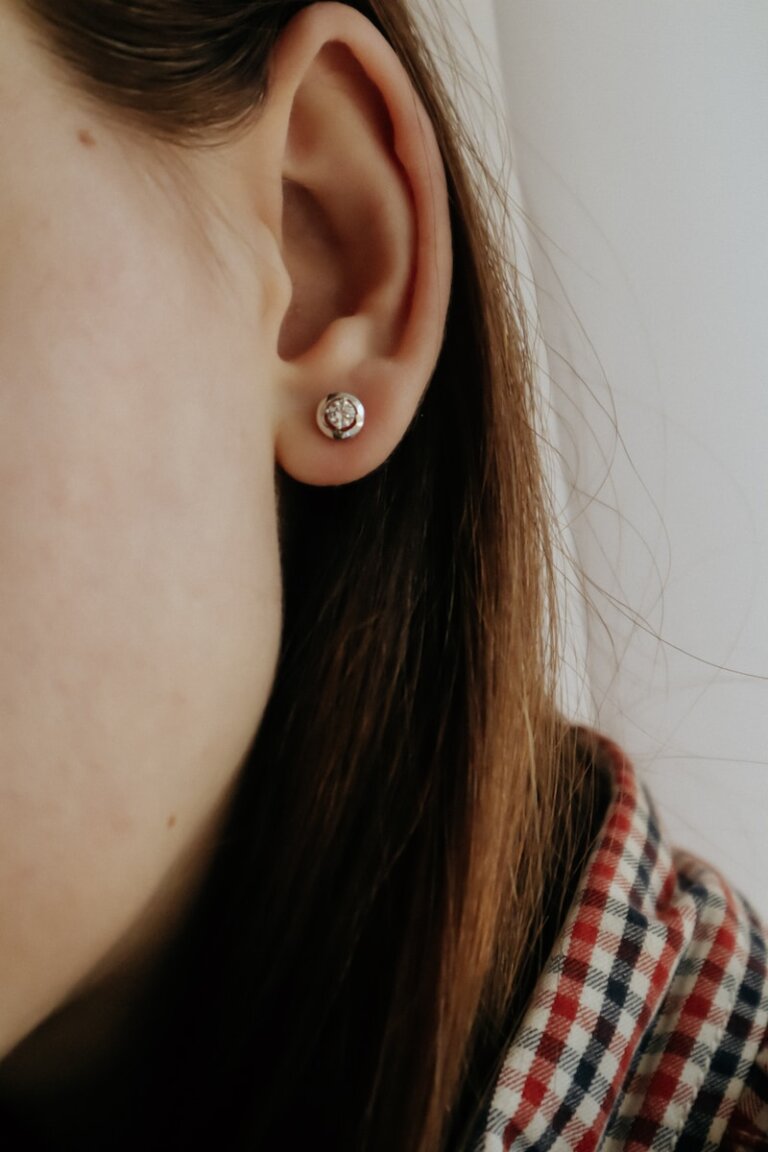Unearthing the Culprits: Common Causes of Excessive Ear Wax Production
Ear wax, scientifically known as cerumen, is a waxy substance produced by the glands in our ear canals. It serves an important purpose in keeping our ears lubricated and preventing them from drying out. However, there are instances when the production of ear wax becomes excessive, leading to discomforting symptoms and potential hearing issues. It is crucial to understand the causes behind this condition in order to effectively treat and prevent it. In this article, we will delve into the common culprits responsible for excessive ear wax production.
1. Narrow Ear Canals
One of the primary factors contributing to excessive ear wax production is having narrow ear canals. Individuals with narrower ear canals may experience a buildup of ear wax more frequently than those with wider canals. The restricted space in narrow ear canals makes it difficult for the ear wax to naturally flow out, leading to an accumulation over time.
To further understand the impact of narrow ear canals, it is important to note that they can be a result of genetic factors or certain medical conditions. In some cases, hormonal imbalances can also contribute to the narrowing of ear canals. People with narrow ear canals should be aware of this predisposition and take necessary steps to manage excessive ear wax production.
Factors influencing excessive ear wax production in individuals with narrow ear canals:
- Genetics: Certain genetic factors can contribute to the narrowing of ear canals, which in turn increases the likelihood of excessive ear wax production.
- Hormonal Imbalances: Imbalances in hormone levels can affect the size and shape of the ear canal, leading to a higher chance of ear wax accumulation.
- Medical Conditions: Some medical conditions, such as temporomandibular joint disorder (TMJ), can cause structural changes in the ear canal, making it narrower and more prone to excessive ear wax buildup.
2. Overproduction of Ear Wax
In some cases, the glands in the ear canal may produce an excess amount of ear wax. This overproduction can be attributed to various factors, including genetics, hormonal imbalances, or certain medical conditions. When the glands produce more ear wax than necessary, it can result in excessive buildup and subsequent blockage.
Understanding the factors that contribute to the overproduction of ear wax can help individuals take proactive measures to prevent or manage this condition. It is important to note that certain medications, such as those used to treat acne or excessive sweating, can also stimulate the overproduction of ear wax.
Factors influencing the overproduction of ear wax:
- Genetics: Like many other biological processes, the production of ear wax can be influenced by genetic factors. Some individuals may have a genetic predisposition to produce excessive amounts of ear wax.
- Hormonal Imbalances: Hormonal imbalances, such as those experienced during puberty or menopause, can disrupt the normal production of ear wax and lead to an excess.
- Medical Conditions: Certain medical conditions, such as hypothyroidism or diabetes, can affect the functioning of the glands in the ear canal, leading to an overproduction of ear wax.
- Medications: Some medications, including isotretinoin (used to treat severe acne) and antiperspirants, can stimulate the glands in the ear canal to produce more ear wax.
3. Impacted Ear Wax
When ear wax is not effectively removed or naturally expelled from the ear canal, it can become impacted. Impacted ear wax is a common occurrence and can be caused by using cotton swabs or other objects to clean the ears, as they push the wax further into the canal instead of removing it. Additionally, wearing earplugs or hearing aids can also contribute to the accumulation of ear wax.
Understanding the causes of impacted ear wax is important in order to avoid practices that can worsen the condition. It is worth noting that the consistency of ear wax can vary among individuals, and some may naturally have wax that is more prone to becoming impacted.
Factors contributing to impacted ear wax:
- Improper Ear Cleaning Methods: Inserting cotton swabs or other objects into the ear canal can inadvertently push the ear wax deeper, leading to impaction.
- Frequent Use of Earplugs or Hearing Aids: Wearing earplugs or hearing aids for extended periods can prevent the natural movement of ear wax out of the canal, increasing the risk of impaction.
- Consistency of Ear Wax: Some individuals naturally produce ear wax that is stickier or drier, making it more likely to become impacted.
4. Hair Growth in the Ear Canal
Hair growth in the ear canal is a natural phenomenon that can also contribute to excessive ear wax production. The presence of hair can interfere with the natural flow of ear wax out of the canal, leading to its buildup. Trimming or removing excessive hair from the ear canal can help alleviate this issue.
While hair growth in the ear canal is a common occurrence, individuals with excessive or fast-growing hair may be more prone to ear wax buildup. It is important to note that excessive hair growth in the ear canal can sometimes be a result of hormonal imbalances or certain medical conditions.
Factors related to hair growth and excessive ear wax production:
- Hormonal Imbalances: Hormonal fluctuations can affect the growth rate of hair, including the hair present in the ear canal. Imbalances in hormone levels can contribute to excessive hair growth and subsequently impact ear wax production.
- Medical Conditions: Certain medical conditions, such as polycystic ovary syndrome (PCOS) or hormonal imbalances, can cause excessive hair growth in various parts of the body, including the ear canal.
5. Skin Conditions
Certain skin conditions, such as eczema, psoriasis, or seborrheic dermatitis, can disrupt the normal functioning of the glands in the ear canal. These conditions can stimulate the overproduction of ear wax, resulting in excessive buildup. Treating the underlying skin condition is crucial in managing the production of ear wax.
Individuals with skin conditions affecting the ear canal should be aware of their increased risk of excessive ear wax production. Proper management and treatment of the skin condition can help alleviate the associated symptoms and reduce ear wax buildup.
Skin conditions that can contribute to excessive ear wax production:
- Eczema: Eczema is a chronic inflammatory skin condition that can affect various parts of the body, including the ear canal. Inflammation caused by eczema can disrupt the normal functioning of the glands, leading to excessive ear wax production.
- Psoriasis: Psoriasis is an autoimmune condition characterized by the rapid buildup of skin cells. When psoriasis affects the ear canal, it can disrupt the glands’ functioning and contribute to excessive ear wax production.
- Seborrheic Dermatitis: Seborrheic dermatitis is a common skin condition that primarily affects areas rich in oil glands, such as the scalp, face, and ear canal. The overgrowth of yeast on the skin can lead to inflammation and increased ear wax production.
6. Foreign Objects in the Ear
The presence of foreign objects in the ear canal can stimulate the production of ear wax as a defense mechanism. This can occur when small objects, such as insects or debris, enter the ear accidentally. The increased ear wax production aims to prevent these objects from further entering the ear canal.
While foreign objects in the ear canal are typically rare, they can trigger a protective response from the body, leading to an increase in ear wax production. It is important to seek medical attention to safely remove any foreign objects from the ear canal and prevent complications.
Factors contributing to excessive ear wax production due to foreign objects:
- Accidental Entry of Objects: Small objects, such as insects, debris, or even earplugs, can accidentally enter the ear canal and trigger an increase in ear wax production.
- Protective Mechanism: The increased production of ear wax is the body’s natural defense mechanism to prevent foreign objects from entering deeper into the ear canal.
7. Age
As we age, our body’s natural ability to remove ear wax diminishes. The glands responsible for ear wax production may become less efficient, leading to increased accumulation. Older adults are more prone to experiencing excessive ear wax due to these natural changes.
Understanding the impact of age on ear wax production is important, especially for older individuals. Regular monitoring and appropriate cleaning methods are crucial to prevent excessive ear wax buildup and associated symptoms.
Age-related factors contributing to excessive ear wax production:
- Decreased Gland Efficiency: With age, the glands in the ear canal may become less efficient in producing ear wax and maintaining its natural flow, leading to increased accumulation.
- Increased Dryness: Aging can cause the ear canal to become drier, which can further contribute to excessive ear wax production and accumulation.
8. Stress and Anxiety
Although the direct correlation between stress and excessive ear wax production is not fully understood, some studies suggest that high-stress levels and anxiety can contribute to its occurrence. Stress hormones may affect the functioning of the glands in the ear canal, leading to increased production of ear wax.
While the exact mechanism of how stress and anxiety contribute to excessive ear wax production requires further research, it is important to acknowledge the potential impact of these factors. Adopting stress management techniques and seeking professional help can be beneficial in managing both stress and excessive ear wax production.
Potential relationship between stress, anxiety, and excessive ear wax production:
- Hormonal Impact: Stress hormones, such as cortisol, can influence the function of the glands in the ear canal, potentially leading to increased ear wax production.
- Immune System Response: Stress and anxiety can affect the immune system, which may indirectly impact the production of ear wax.
Conclusion
Excessive ear wax production can be caused by various factors, including narrow ear canals, overproduction of ear wax, impacted ear wax, hair growth in the ear canal, skin conditions, foreign objects, age, and stress. Identifying the underlying cause of excessive ear wax is crucial in implementing effective treatment and prevention strategies. If you are experiencing symptoms such as hearing loss, earache, or a feeling of fullness in the ear, it is essential to consult a healthcare professional for a proper diagnosis and appropriate management of the condition.
FAQ
1. What are the factors that contribute to excessive ear wax production in individuals with narrow ear canals?
- Genetics, hormonal imbalances, and certain medical conditions such as TMJ can contribute to excessive ear wax production in individuals with narrow ear canals.
2. What factors can lead to the overproduction of ear wax?
- The overproduction of ear wax can be influenced by genetics, hormonal imbalances, certain medical conditions like hypothyroidism or diabetes, and certain medications like isotretinoin or antiperspirants.
3. What are the causes of impacted ear wax?
- Impacted ear wax can be caused by improper ear cleaning methods, frequent use of earplugs or hearing aids, and the consistency of ear wax, which can vary among individuals.
4. How does hair growth in the ear canal contribute to excessive ear wax production?
- Hormonal imbalances and certain medical conditions like PCOS can cause excessive hair growth in the ear canal, which can interfere with the natural flow of ear wax and lead to its buildup.







